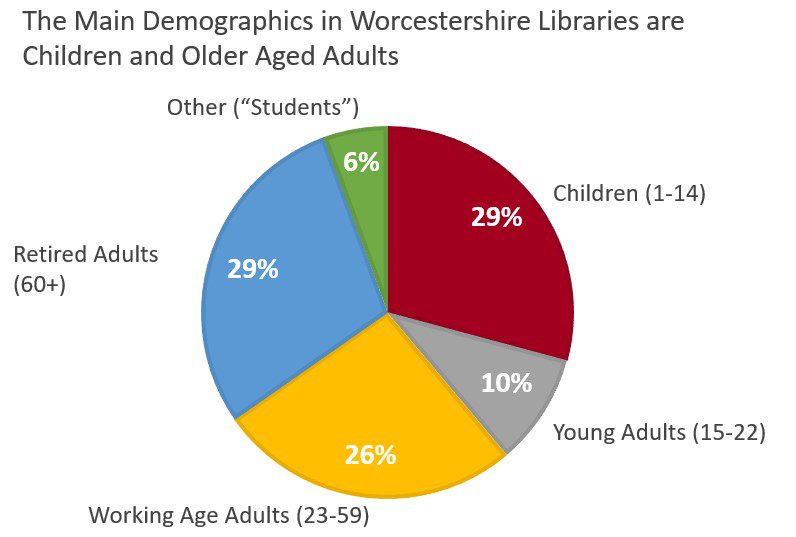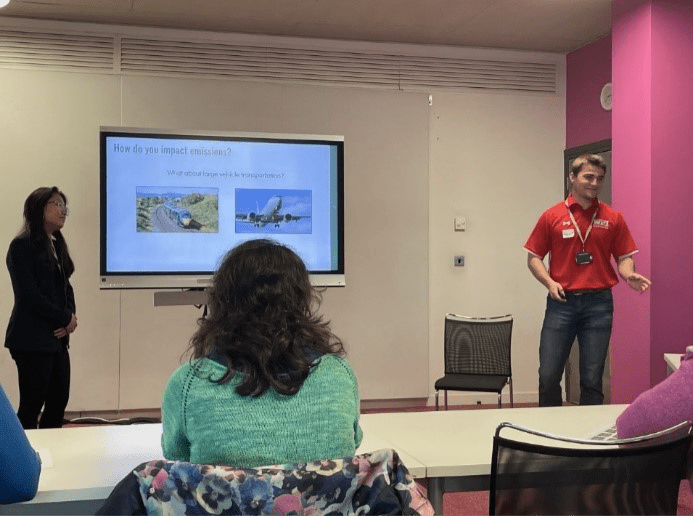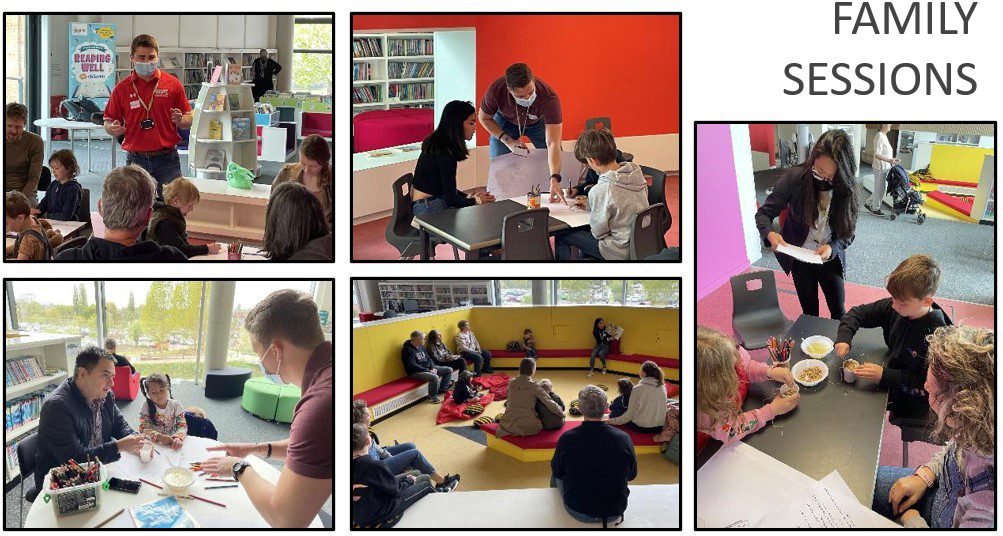Carbon Literacy In Worcestershire Libraries written by Heather Sykes, a project led by students Lauren Balukonis, Adam Marsh, Amy Ngan, and Blake Pedersen in 2022, and a further project led by students Shannon Daly, Thomas Lamar, Reyna Loycano, and Kerri Thornton in 2023.
Carbon Buzzwords
The language around sustainability is ever-changing to keep up with the changing world and environment. As we have developed a better understanding of sustainability and unsustainable practices, we have developed a language to discuss it. Some of these words are new and can be confusing if you haven’t heard of them before. Below are listed a few sustainable buzzwords, so you know what we are referring to throughout the article.
- Carbon Footprint: A person’s carbon footprint is the total carbon emissions any one person, organization, or product may be causing (The Carbon Trust, 2018).
- Carbon Literacy: Carbon literacy is the awareness of the impact of an individual’s carbon footprint on the environment and the efforts to reduce these emissions as individuals, communities, and organizations (The Carbon Literacy Trust, 2023).
- Carbon Literate: When individuals are carbon literate, they can work towards making sustainable decisions and changes in their lives (The Carbon Literacy Project, 2018b). Being carbon literate also allows individuals to help others become more carbon literate and develop their own methods of being sustainable (The Carbon Literacy Project, 2018a).
- Net Zero: Net zero means cutting greenhouse gas emissions to as close to zero as possible, with any remaining emissions re-absorbed from the atmosphere, by oceans and forests for instance (The United Nations, 2023).
Why Carbon Literacy Matters
We all need to make drastic measures in order to meet the UK’s plan to be ‘net-zero’ by the year 2050. To do this, we must become carbon literate, so we know what steps to take.
Increasing carbon creates rising sea levels (Department for Business, 2019). This kills marine creatures (The Royal Society, 2020). Further, it will likely displace 20 million people in the US (Strauss et al., 2015). It will also likely kill 700-1000 more people a year from heat (Department for Business, 2019). Increasing carbon emissions also cause droughts and flooding depending on the season. This then causes the loss of crops, restricted food supply, and malnutrition. We can’t survive as a society with increased carbon emissions.
Groups such as the Carbon Literacy Project (CLP) are providing accredited training on climate change and the impacts of carbon emissions. The CLP program teaches about the steps to take in their daily working and studying life in order to cut their CO2 emissions.
The University of Worcester offers this training to its students, staff and Sanctuary Housing and Platform Housing. For adults and families to be able to access the course, research was carried out to reduce the time spent. This means those with less time to spare can still join in.
Having carbon literacy training creates a more carbon-literate community. When people are more individually sustainable, a sustainable ethos is developed. This then encourages peers and businesses to behave similarly, changing attitudes and behaviours around sustainability. Individual actions sometimes feel small. However, when you realise one person’s actions impact another’s, there is a domino effect. With more people changing their behaviours to become more sustainable, we can enhance an atmosphere for a sustainable future.
Reducing our carbon emissions will help to reduce global warming.
Why Worcester?
There are 21 libraries in Worcestershire ranging in size. The Hive is one of these and is the first fully-integrated university and public library. The Hive has worked hard to keep its building as green and clean as it can. If you ever get the chance to visit or talk to a member of staff, do it! They are very friendly and more than happy to help. The staff can explain all the clever ways the library was designed and built to be an environmentally friendly space. It is a special building in the city, both for students and members of the public. The library offered carbon awareness to its users to support the research and especially wanted to help as its demographic has such a great range. A video presentation of the latest research is available here.

What is Carbon Literacy Training?
Carbon literacy training was initially developed by The Carbon Literacy Project. They offer a range of open courses across Britain. However, the whole course takes about eight hours. This may deter some people, due to our busy lives. An introduction to carbon literacy training may make the course more accessible and act as a precursor to doing the full 8 hours.
Evidence and statistics have shown that the training course does help individuals to reduce their carbon footprint. We wanted to make this exciting concept accessible to more people, with less time available.
With a lack of sufficient training and education on carbon literacy in schools, it falls to individual organisations to provide training, our aim is to help enhance the free training opportunities for Worcestershire’s community.
What did we do to Teach Carbon Literacy?
Interviews took place with library customer managers and customer advisors. This was along with observations about library spaces during visits to regional libraries. Surveys shared on social media with library users gained useful insight, whilst library customer advisors helped to collect information on the library. Information about the structure, programs, as well as the use.
This data then enabled pilot training to be developed for adults and families. It took place in The Hive as part of the Earth Day celebrations. Then, feedback on the carbon literacy training was the final element of the research.


For the 23 of April 2022, ten sessions had been set out to take place. But due to Covid, these were cut to four sessions: two for adults and two for families. The sessions were tailored to suit the needs of each group. The adult sessions were made and given in a lecture style with hands-on activities and talks. The family sessions split into three parts. To be made up of a story time, a drawing activity, as well as a birdfeeder craft.
Carbon Literacy Research Outcomes
Interviews, informal talks with library managers and staff, and library users’ survey data taught us a lot. We learnt about the different people who use the library and when each age group used the libraries. We also learnt which session types are needed, and the best times to deliver the carbon literacy training. It became clear which learning styles and program lengths are best. In general, the four key findings were:
- Different ages show a need for both adult and family sessions.
- The best time to deliver Carbon Literacy Training is outside school and working hours.
- There is not one preferred learning method (audio, visual, interactive, reading or writing).
- The preferred training length was a shorter taster session.
Therefore, what we recommend:
- Worcestershire Libraries should pilot and deliver the training through the county.
- The libraries should place more focus on promoting the training sessions to get more stuck in.
- The Worcestershire libraries should develop partnerships with other organizations or groups.
- The Hive and Worcestershire Libraries should offer the accredited training at no or minimal cost to the participant to help everyone to join in.
Watch a video of the students presenting their research. Click the video below in order to watch.